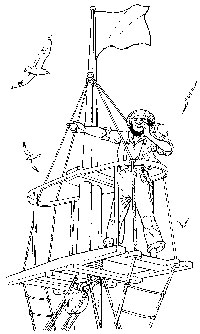F R O M T H E C R O W E ’ S N E S T
The Only Way To Get There

Listening to predicted revenue loses for the New England groundfish fleet following stock assessment driven cuts to cod limits, there is a question that rings out. Is there an echo in here?
Pushed aside, thrown to their knees, kicked to their elbows, stomped face down and then dragged, New England fishermen have long been holding on in the belief that hope is just beyond the next obstacle. But the next obstacle is the same one management has been slamming into as it runs in circles.
The solution to the problem federal fisheries management has found so impossible to solve over nearly four decades seems as much about what they are not doing as it is about what they insist on trying. The assessment that is the basis of these cod cuts is known to be too data-poor to produce an accurate picture of the resource.
Now there is really an echo in here. Some marine biology researchers have long known a truly predictive assessment would need to include more than a count of fish heads. Data on the ecosystems in which fish live, on the relative impacts of gear types on habitat and all fish populations, and on the highly variable natural systems of the marine environment would help round out the very narrow data set on which critical decisions are currently based.
Why isn’t this data included? Another echo! A lot of marine science that would make a more complete database is well known. Ted Ames’ work on Gulf of Maine cod populations for example, may not be widely known, but is the kind of information that should be included.
Marine systems research, habitat studies, etc., paid for by the federal government are already out there. The dramatic shift in the weight and age of cod in the GOM begs the question “why is it true?” more than “is it true at all?” A fish head count holds not a hint of an answer as to why.
If the work fisheries scientists do is to be valuable, if the fishermen and the public are to trust that work, and if we are to ever attain sustainability, a comprehensive data-rich stock assessment is the only way we are going to get there.
